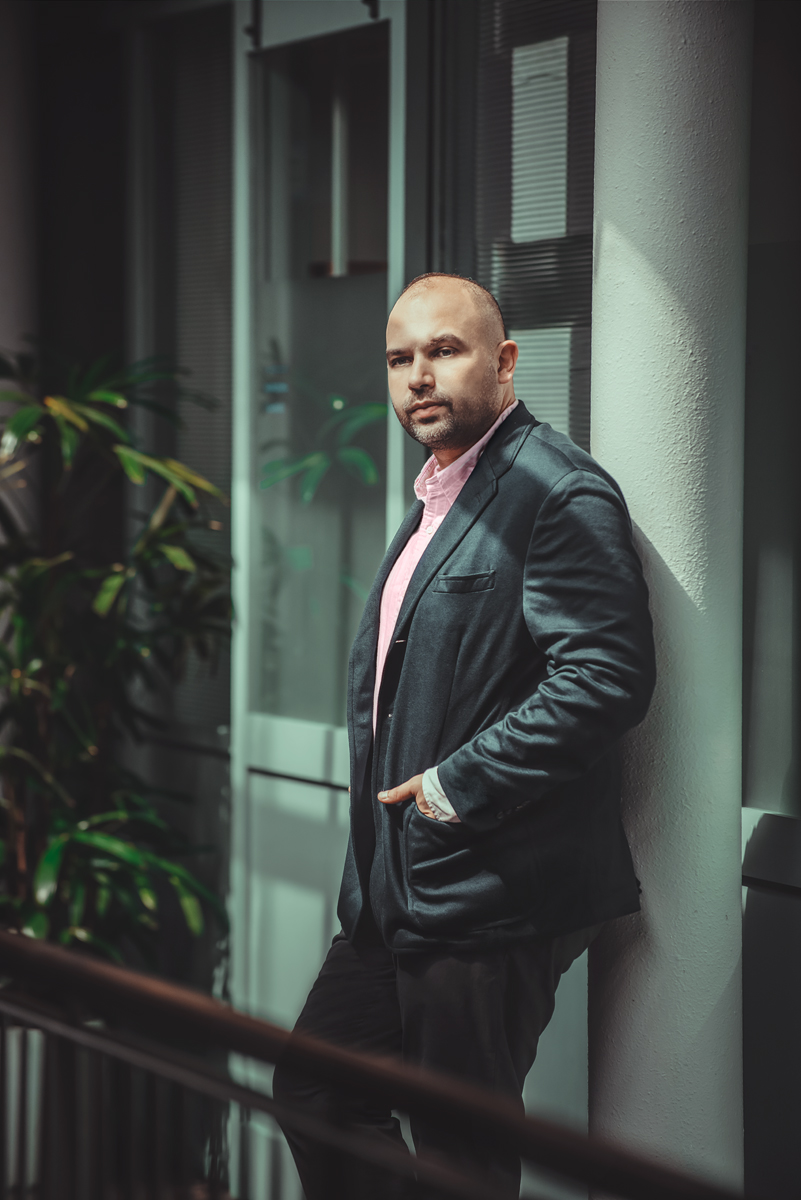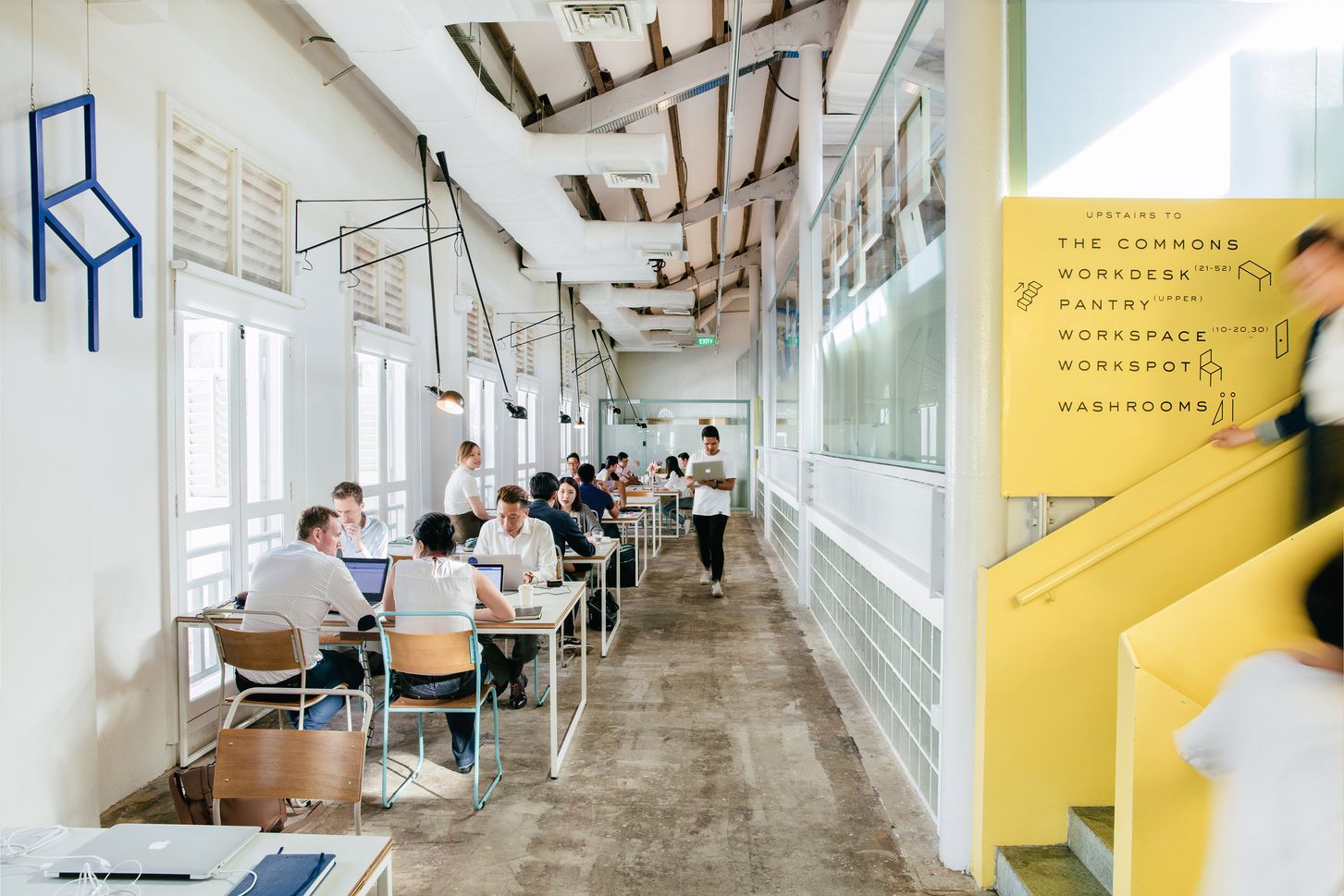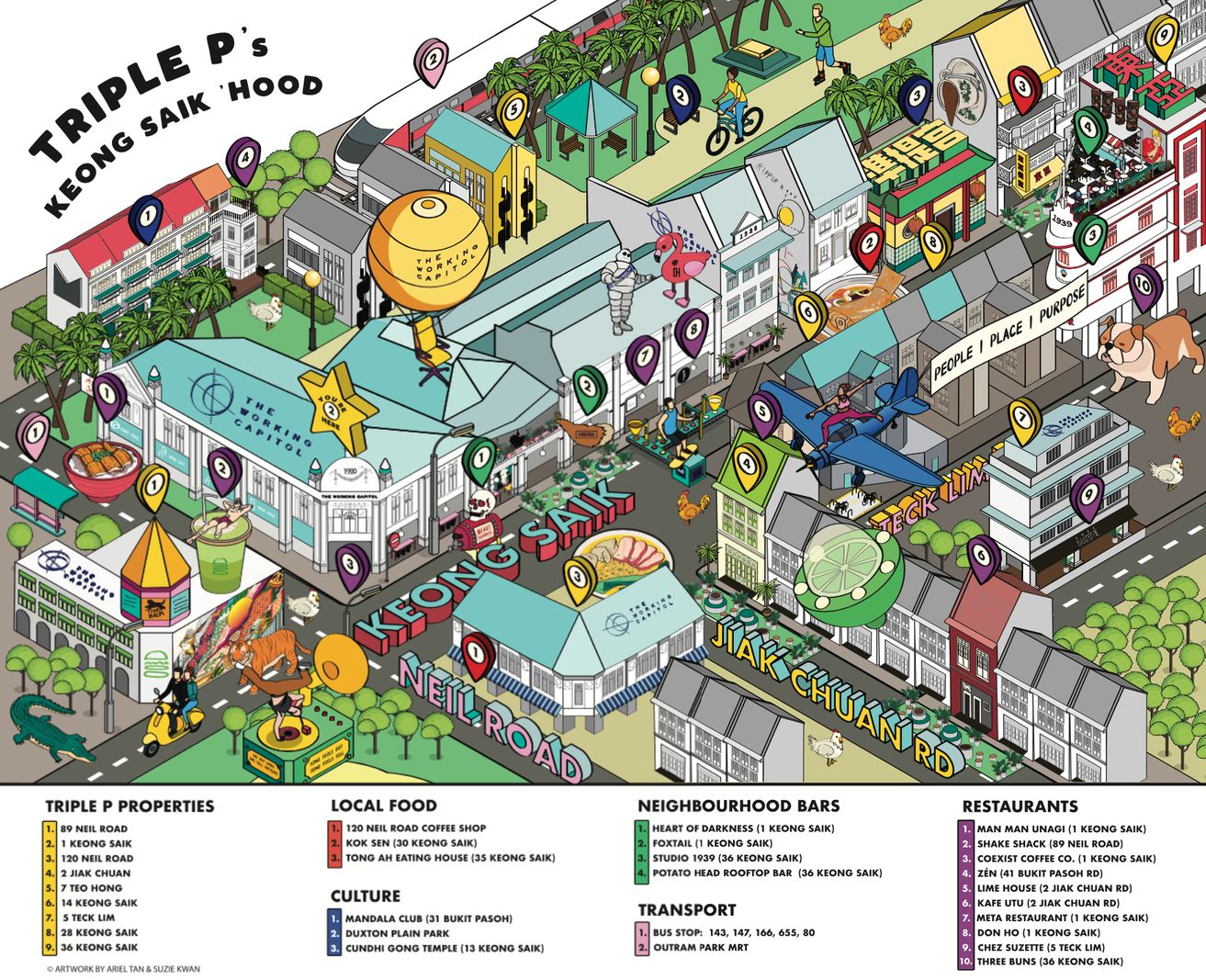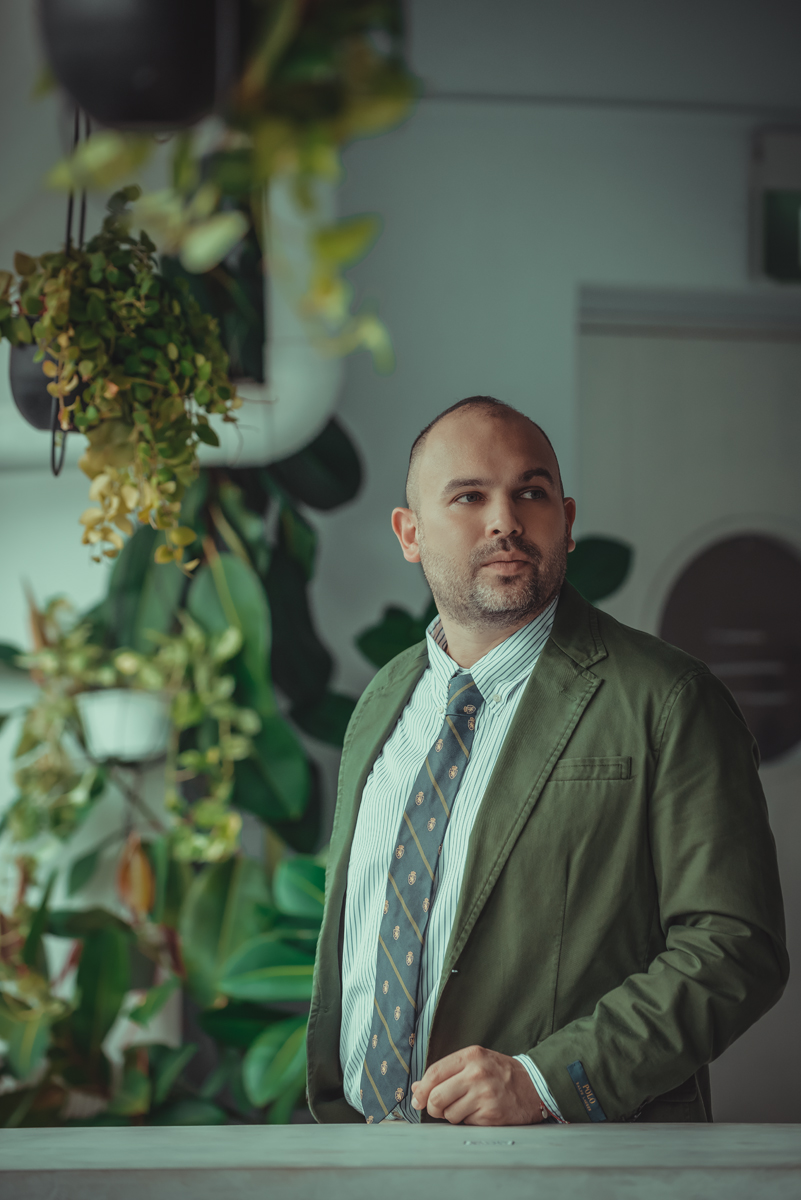What makes a neighborhood great? For many ruthlessly practical Singaporeans, it’s anything that keeps a home’s resale price attractive. We judge a neighbourhood’s ‘greatness’ based on its proximity to a MRT station, a shopping mall, a prestigious primary school, and measure its value in dollars and cents.
 Outfit by Polo by Ralph Lauren
Outfit by Polo by Ralph Lauren
38-year-old Ben Gattie, a self-professed serial real estate entrepreneur who grew up in Singapore and spent a decade studying and working in the United States, holds a markedly more romantic view.
For him, it’s the architecture, history and culture, and unique local identity of a neighborhood, all coming together to form a rich tapestry that he finds inspiring. This, especially so when set against an increasingly homogenised built environment in Singapore.
In particular, he found himself fascinated with old neighborhood shophouses.
“Initially, after I first moved back to Singapore, they provided a sense of rediscovery. Having developed an appreciation for architecture and real estate, it was quite invigorating to see these gems that were always there in plain sight, but just needed some reimagining and TLC,” he explains.
The “human scale” and “openness” of these shophouse neighborhoods makes them compelling as well, he says. “In my opinion, it’s easier to get to know your neighbors and foster a sense of community in such environments.”
Romantic notions aside, he also saw a business opportunity in them, saying: “I observed that a lot of neighborhood shophouses were highly underutilised. After studying maps by the Urban Redevelopment Authority and exploring almost every single row of shophouses on the island, I zeroed in on mixed-use shophouses.”
Having worked in a boutique real estate development company in New York City specializing in the conversion of small mixed-use properties in areas like Harlem, Lower East Side, and SoHo, Gattie witnessed first-hand the rapid transformation of these neighborhoods.
Inspired, his shophouse investment business The Bamboo Group was thus set up in 2009 with the intention of refurbishing mixed-use shophouses with F&B or retail brands on the ground floor and studio apartments in the upper floors.
It was a niche business, but a necessary one in a real estate landscape “dominated by behemoths”, says Gattie. To date, the company has bought, redeveloped and divested a portfolio of $200 million in shophouses across neighborhoods like Tanjong Katong, Siglap, Thomson, Upper Bukit Timah, and Lavender.
(Related: For Figment, home is where the art is)
- A HUMAN TOUCH
- BUILDING TIGHT-KNIT COMMUNITIES
A Human Touch
.jpeg)
But a big part of what makes a neighborhood great is also its people and for Gattie, the transactional nature of his business lacks the human element that he so desired — or a “more sustainable and human” approach to real estate.
This would later form the genesis for The Working Capitol, a co-working and lifestyle hub set up in 2015 in the Keong Saik neighborhood within the premises of an old biscuit factory. Rather than compete head-on in hardware offerings with other co-working space operators crowding the market at that time, The Working Capitol instead puts its energies into developing the very neighborhood it is situated in — and let like minded folk find them instead.
Using its headquarters at 1 Keong Saik Road as a springboard, the company quickly expanded into almost 20 shophouses in the precinct over the next few years, which it then filled through partnerships with F&B, retail and lifestyle brands that resonated with its values, aesthetics, and purpose. In a few short years, Keong Saik became the place to see and be seen.
 The Working Capitol interiors
The Working Capitol interiors
The key to this successful revitalization is what he describes as a “holistic neighbourhood approach”. Through this, the company accords importance to the overall success of the neighborhood, instead of individual tenants, thereby creating an attractive tenant mix that benefits both the tenant and the visitor. In 2021, to further ensure the alignment of brand ethos, Gattie consolidated all of these brands, projects and partners — including placemaking and design studio LopeLab — under the operating company Triple P Projects.
“Given the recent interest in shophouses and influx of careless capital into Singapore, we’ve seen first-hand the unhealthy impact of a short-term investment mindset. New landlords are flipping properties trying to make a quick buck, and raising rental expectations without curation of concepts or providing any value-added services.”
In contrast, Triple P’s holistic approach means it invests in placemaking initiatives and public space activations such as collaborating with local artists like Ripple Root for street murals and repurposing public carpark lots into communal seating areas. Through master leases of 10 to 20 years, Gattie says Triple P is able to “provide long-term visibility to tenants so they themselves can invest in the neighborhood”.
“We want people to come to Keong Saik for one reason and discover many more reasons to come again,” he summarises.
- A HUMAN TOUCH
- BUILDING TIGHT-KNIT COMMUNITIES
Building Tight-Knit Communities
 The Triple P Project guide to the Keong Saik neighborhood
The Triple P Project guide to the Keong Saik neighborhood
Throughout the gentrification of Keong Saik, Gattie has been careful about preserving the deep historical and cultural elements of the neighborhood — or what he calls ‘positive gentrification’. To him, the long-standing F&B establishments like Kok Sen and Tong Ah, community centres and clan associations are still as much part of the community as are the flashy restaurants and thriving bars that currently define the area for a younger generation.
He elaborates: “It is paramount that we have a positive impact on our community, both new and old. It is precisely this duality that makes Keong Saik so charming. Change and gentrification are going to happen regardless, and we want to lead that change as responsible stewards.”
To encourage its co-working members to be “conscious citizens of the neighborhood they occupy”, Triple P launched a free quarterly Keong Saik tour for new members run by a local tour guide so they can learn about the history of the area, and also regularly organized initiatives with Kreta Ayer Community Centre, some of which were co-sponsored with its member companies.
And like any true community, troubles are shared when times are tough.
At the onset of the pandemic, Triple P extended rental relief to its F&B partners and some of its co-working members. This, before the announcement of government support measures and without any guarantee that the company would be able to recoup the relief from its landlords at the time.
“But it was a necessary move to stabilize the community,” says Gattie. “For us, it didn’t make sense to lose our members. If they wanted to downsize, we found a solution. We are extremely proud to have maintained 98 per cent occupancy throughout the pandemic.”
 Outfit by Polo by Ralph Lauren
Outfit by Polo by Ralph Lauren
With the easing of COVID measures, things are finally looking up. Gattie says the company has seen a “massive spike in demand” since January, and have been able to expand into neighboring shophouses at an average of “almost one handover per week”. Nevertheless, he is taking a measured approach to the company’s future plans.
“We’re expanding, just with more focus. We will finally be able to start planning events, placemaking, and community building initiatives, and will soon announce two new event venues for our members to host these initiatives.”
He adds: “We will also launch an app to facilitate access to our entire ecosystem of tenants, members, and partners. This will make it easier for our community-at-large to connect, book common facilities and enjoy plenty of perks in the neighborhood.”
For now though, he’s just pleased to see the community thriving once more. “We’re happy to see so many people wanting to come back to work and enjoying our tenants’ venues!”
For more inormation on Triple P Projects, click here







 Outfit by Polo by Ralph Lauren
Outfit by Polo by Ralph Lauren
.jpeg)
 The Working Capitol interiors
The Working Capitol interiors
 The Triple P Project guide to the Keong Saik neighborhood
The Triple P Project guide to the Keong Saik neighborhood
 Outfit by Polo by Ralph Lauren
Outfit by Polo by Ralph Lauren




 Back
Back
